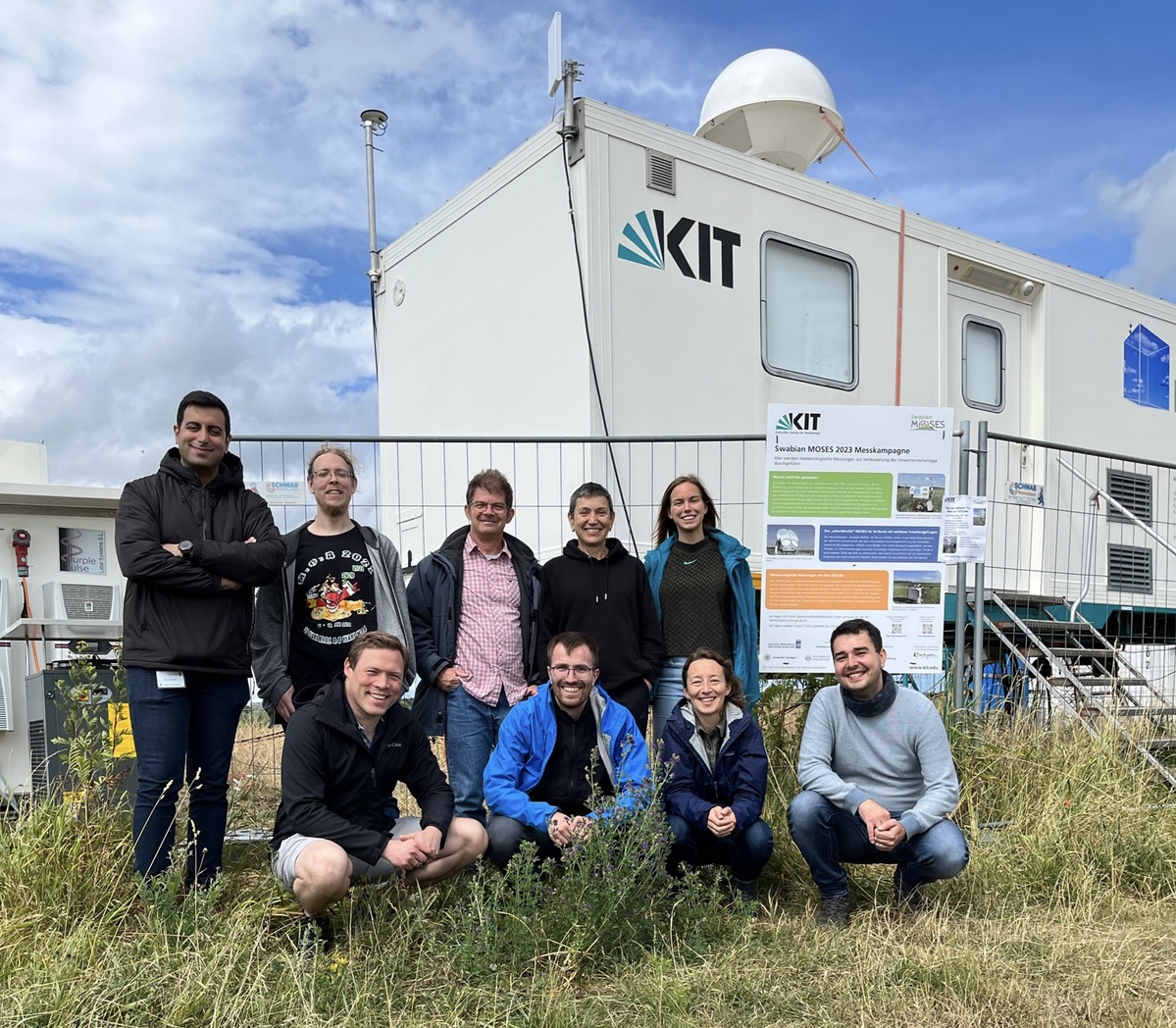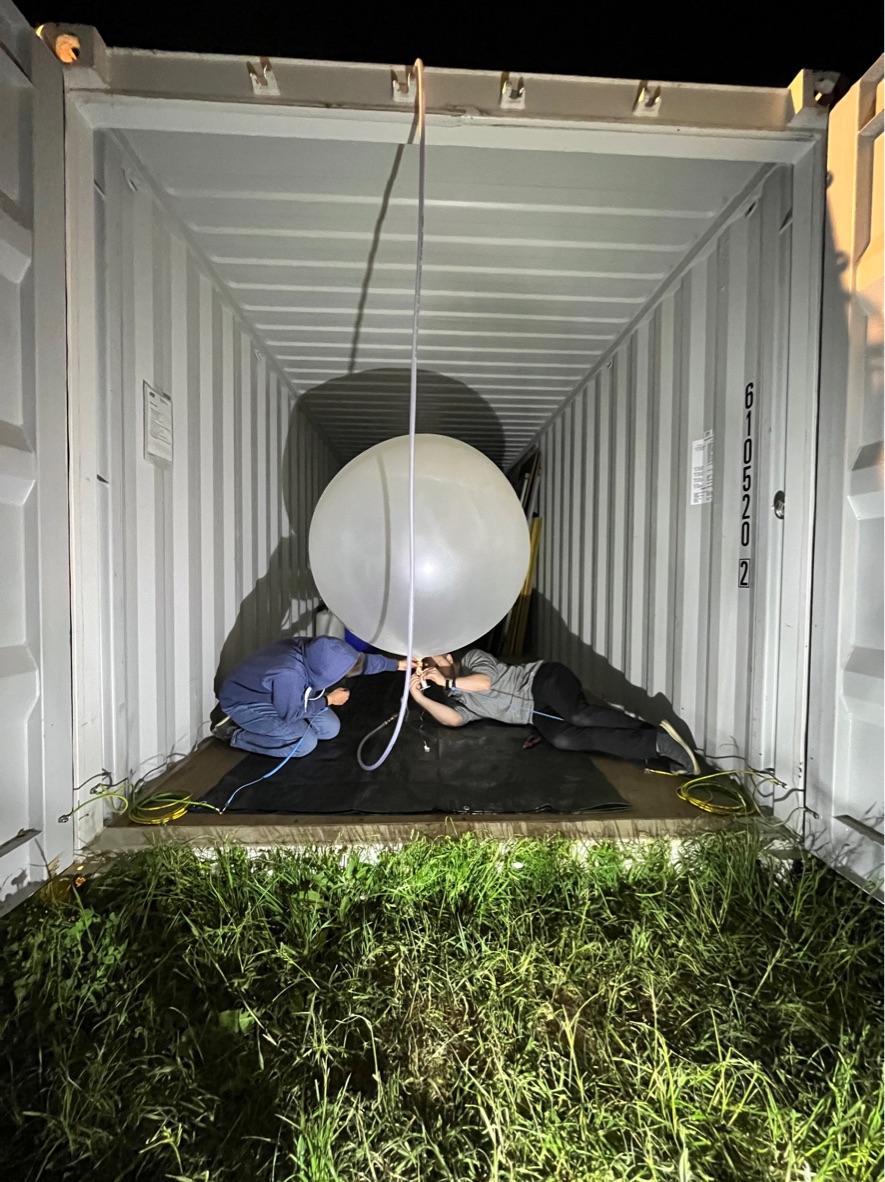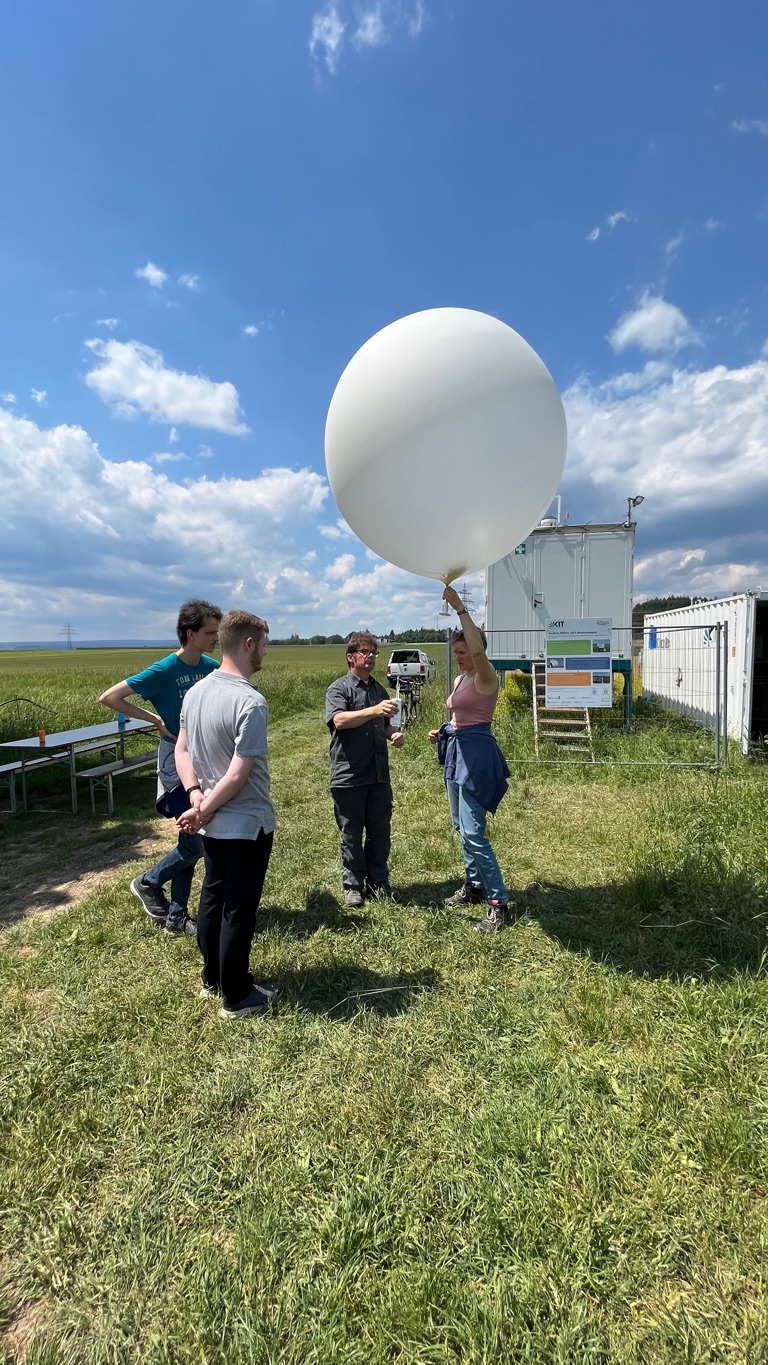November 15, 2023 - Kick-off workshop for data evaluation
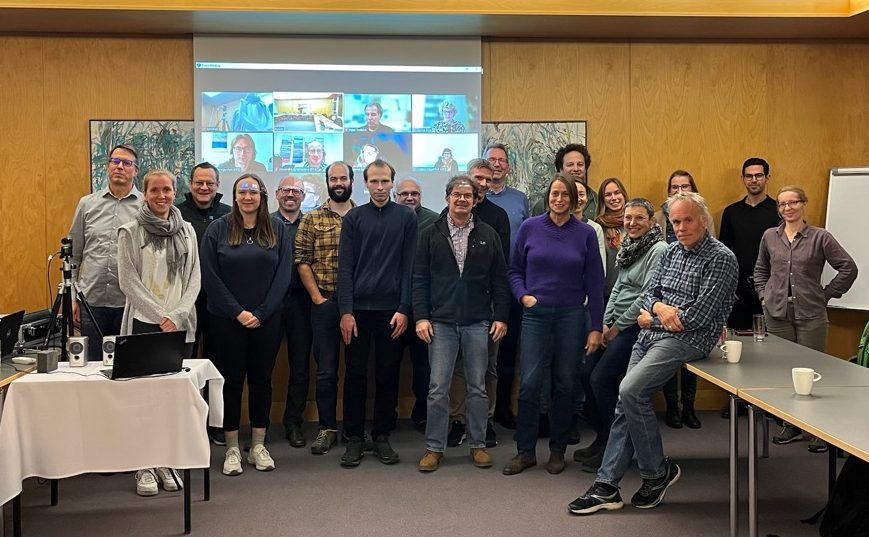
After the measurement campaign is before the evaluation. To kick off the data evaluation, the scientists from KIT, UFZ, GFZ and the participating universities met at KIT in Karlsruhe. There they had the opportunity to discuss the evaluations and collaborations and make further plans. Particular attention is being paid to data publication, as the data from the measurement campaign should be made available to the scientific community quickly so that other teams around the world can work with the data.
October 3, 2023 - Article about Swabian MOSES in lookKIT
The third issue of the KIT magazine lookKIT in 2023 will deal with the topic of "Climate Change". The "Swabian MOSES" measurement campaign is also described in this issue and there are more pictures. There is also an exciting video to accompany the article.
The lookKIT issue is available HERE
Click here for the video
September 25, 2023 - What happens to the data?
The measurement data from the Swabian MOSES measurement campaign will be analyzed in different ways for various projects in the coming months and years. This news article explains how part of the evaluation is carried out.
August 2, 2023 - Did the measurement campaign end after the 2nd IOP? Of course not
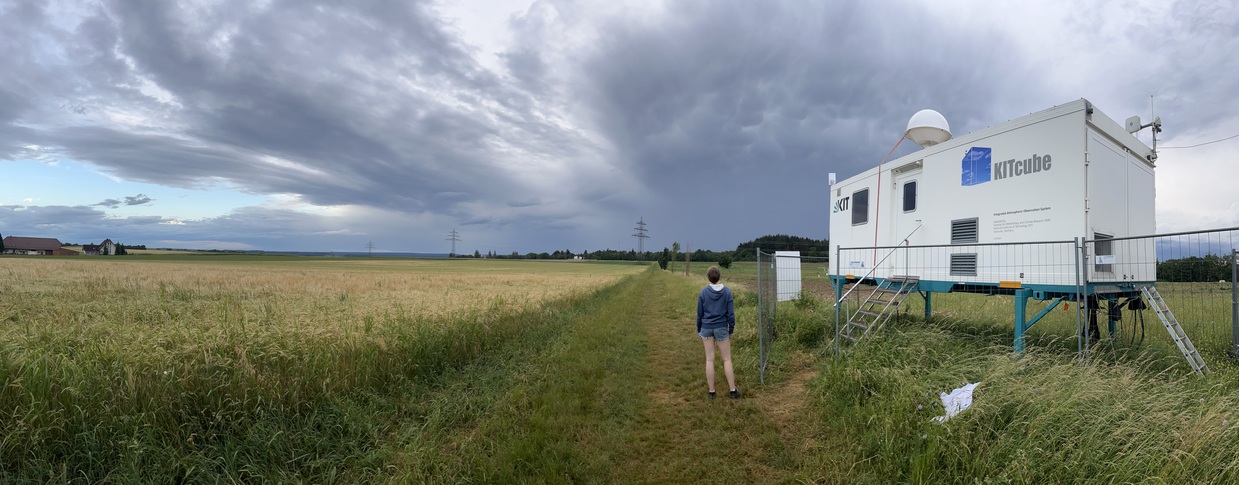
It has been quiet here on the news page since the 2nd intensive measurement phase (IOP). Because after the 2nd IOP, the measurement campaign picked up speed and there were five more intensive measurement phases in quick succession.
During these five measurement phases, measurement data was collected in exciting weather situations, such as the severe storm in Baden-Württemberg on July 11.
During this year's measurement campaign at the KITcube in Villingen-Schwenningen, one drink in particular proved to be a favorite: cool Spezi. Both the day shift to stay in a good mood and the night shift to stay awake appreciated the fridge filled with Spezi.
Now the intensive phase of the KITcube measurement campaign ends with a rainy and cool weather period. For the activities of the UFZ with the focus on hydrological extremes, however, this weather period is exciting and further measurements with the rover will be carried out.
July 29, 2023 - Open day at the KITcube in Villingen-Schwenningen
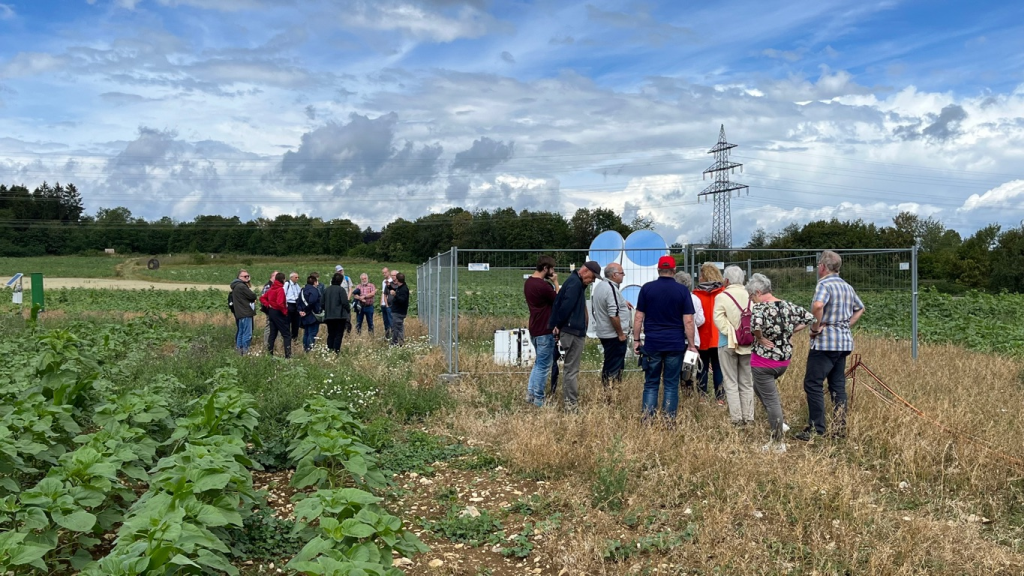
Many interested visitors came to the open day at the KITcube in Villingen-Schwenningen to find out about the activities of the Swabian MOSES measurement campaign. Four scientists from the UFZ and KIT offered guided tours of the measuring field and got into conversation with the visitors. During weather balloon ascents, the children were able to see and release huge weather balloons for the first time.
The Schwarzwälder Bote and Südkurier newspapers were also on site and reported on the successful open day.
July 26, 2023 - Article about Swabian MOSES at Deutschlandfunk
During an IOP in June, a journalist from Deutschlandfunk visited our measuring station in Villingen-Schwenningen and found out about our work. This resulted in a successful report, which you can listen to here.
July 25, 2023 - Visit from the DWD to the KITcube
A delegation from the German Weather Service (DWD) visited the main site of the KITcube and an outstation in Fischerbach on Tuesday to find out about the measurements at the KITcube. During a joint lunch, the evaluation of the measurement data was discussed and plans for future cooperation were forged.
July 12, 2023 - Report about Swabian MOSES on ZDF
On Tuesday, July 11, ZDF visited the KITcube in Villingen-Schwenningen and the very next day ZDF heute and ZDF Drehscheibe reported on the Swabian MOSES measurement campaign.
The shorter report on ZDF heute can be seen here: click here
The longer report on ZDF Drehscheibe can be seen here: click here
June 22, 2023 - Two newspaper articles on the measurement at the main site in Villingen-Schwenningen
On Thursday, June 22, two local newspapers reported on our measurement activities in Villingen-Schwenningen.
The first article appeared in the Schwarzwälder Boten. Click here for the report.
The second article was published in the Südkurier. Click here for the article.
June 20, 2023 - Start of the 2nd IOP
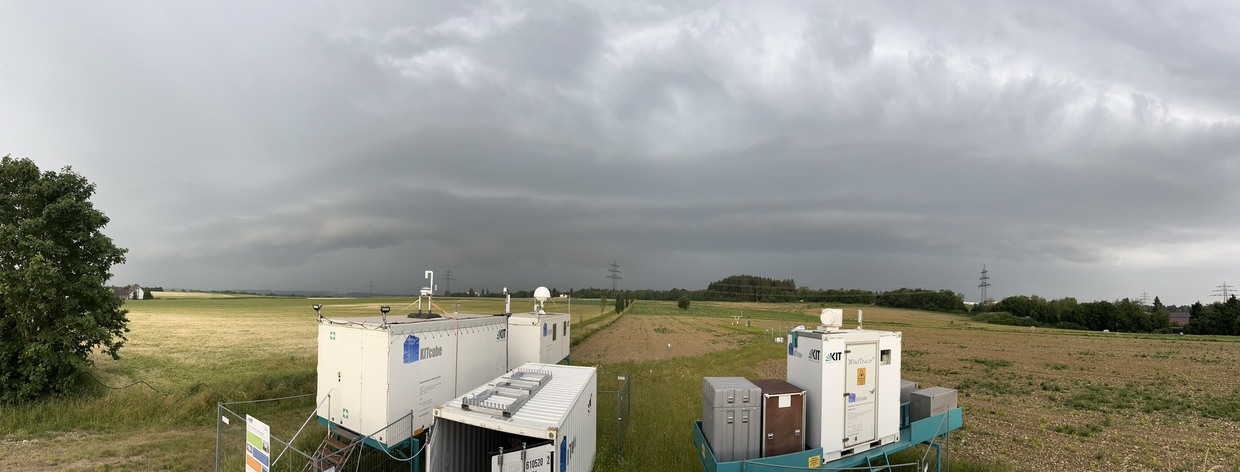
Now they're finally here - the thunderstorms over the Black Forest and the Swabian Alb! The thirst phase is over and we can go into the field. On Tuesday, June 20, punctually at 7 a.m., the first radiosondes were launched in Koestlach (Alsace) and in Villingen-Schwenningen. Further probes were sent into the sky every three hours.
On Wednesday morning, we were able to launch a radiosonde directly into a thunderstorm, as the ascent at 10 a.m. coincided perfectly with a thunderstorm passing overhead. That was great fun!
Unfortunately, our anticipation of the literal THURSDAY was disappointed. All we got in Villingen-Schwenningen were showers and the foothills of the surrounding thunderstorms. What a pity!
But well, the measurement data we recorded is still very valuable, because we recorded a "non-event" (thunderstorms predicted but did not materialize).
We were still on site until Friday, June 23 and received visits from various media representatives. Interested local residents also came by and are still very welcome.
June 10, 2023 - Radio interview on Swabian MOSES by Prof. Kunz
On Saturday, June 10, Prof. Michael Kunz gave an interview on Radio Eins (RBB) on the subject of"How do you research thunderstorms?". Prof. Kunz reported in the RBB program "Only for adults" about the activities around Swabian MOSES. You can listen to the program here: CLICK HERE
June 7, 2023 - First IOP!
From Wednesday, June 7, to Friday morning, June 9, 2023, the first IOP (intensive observation period) of the Swabian MOSES 2023 measurement campaign was carried out. Three colleagues from KIT were at the main site in Villingen-Schwenningen and launched radiosondes at 3-hour intervals. During this time, they trained three student assistants who will be responsible for launching the radiosondes in future. The radiosondes in Koestlach in Alsace were also launched remotely by computer.
At the same time, the UFZ carried out a rover trip in the Lindach valley to determine the groundwater levels.
There were no major thunderstorms at the main site. However, we were able to observe many thunderstorms from a distance on Thursday. As we have remote sensing equipment, it is fine for us if the thunderstorms do not pass directly over the site. In summary, it was a successful IOP, during which we learned a lot and were able to familiarize ourselves with many processes.

